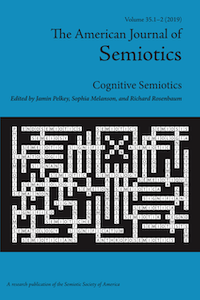"Toward a Renewed Theory of the Narreme," American Journal of Semiotics

From Propp’s functions to Levi-Strauss’s mythemes, from Greimas’s actants to Barthes’s narrative units, and beyond, numerous scholars of linguistics, comparative mythology, and narratology have proposed frameworks for identifying and systematizing the fundamental particles of narrative and describing how they interact. The term “narreme” was suggested by Eugèn Dorfman and has caught on, as the proposed basic unit of narrative structure, analogous to the “phoneme” in phonology; however, although the term has been deployed by many contemporary scholars (primarily within the context of ludology (or “game studies”), this has not yet led to definitions or descriptions of the narreme and its associated architecture that have been broadly accepted, nor has it produced any robust descriptive or generative model that has come into wide use. None of the proposed formulations provide a sufficient degree of precision or granularity, and none operate at a suitable level of abstraction to make generative research on the subject possible. Building on the insights of the aforementioned classic scholars in the fields of structuralist semiotics and cognitive studies, as well as contemporaries such as David Herman, Bruno Latour, Umberto Eco, and others, I propose a preliminary model of the narreme, its available values, permissible combinations, and codified conventional patterns within the construction of the narrative objects that the human mind instinctively recognizes as a “story”. My intent is to contribute to an atomic theory of narrativity that can be further developed and deployed as an apparatus for the analysis and creation of works of narrative art, in addition to possible uses in education and narrative-based therapies.
Year of Publication: 2019Publisher website
Author: Richard Rosenbaum
